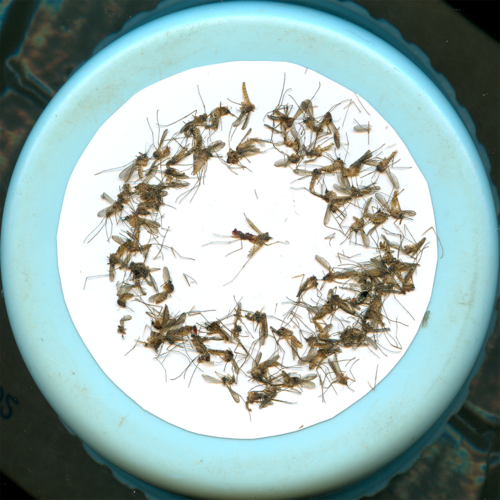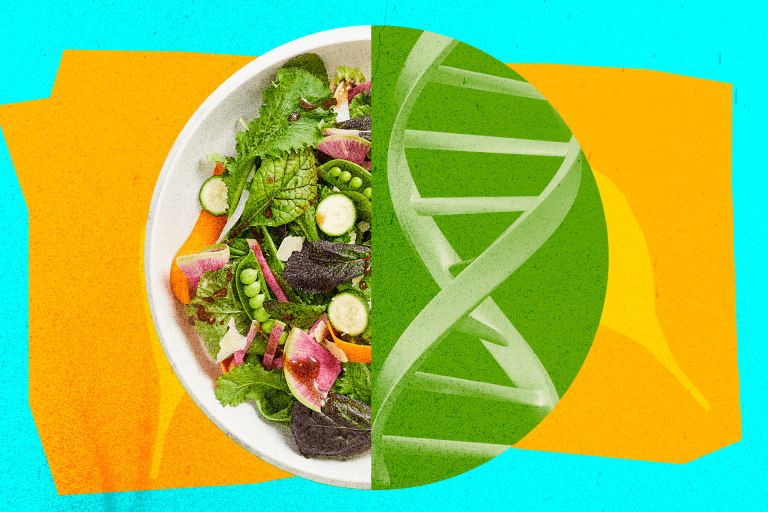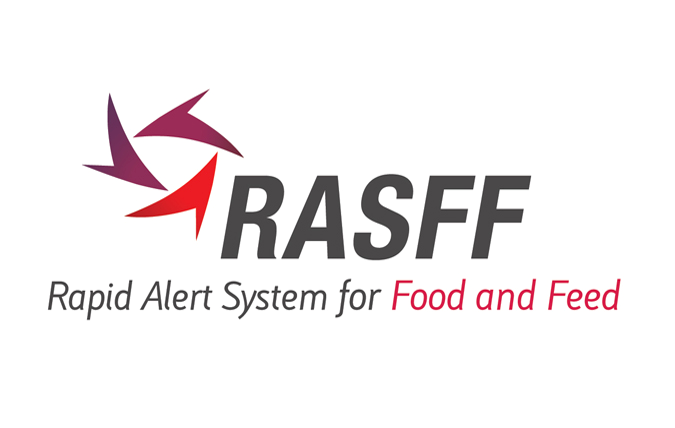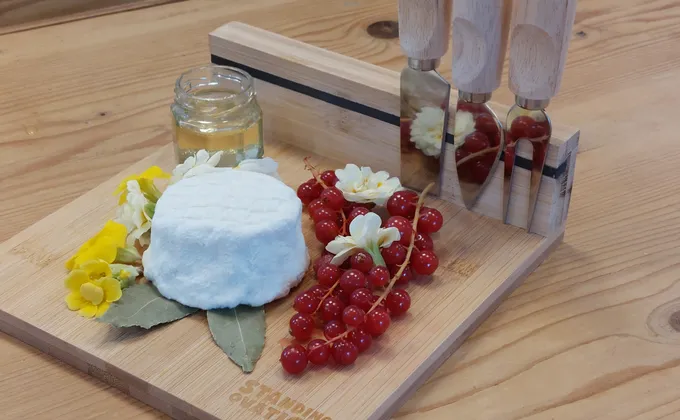News
Catalonia: GMO Clearfield rapeseeds do not have better yields
In Spain, the public agronomy institute Irta regularly carries out evaluations of several varieties of rapeseed. Recently, they introduced into their evaluation some Clearfield rapeseed varieties, herbicide tolerant varieties modified via in vitro mutagenesis. Result: these GMOs, grown commercially in Europe outside the legal framework, do not have better yields than their conventional counterparts.
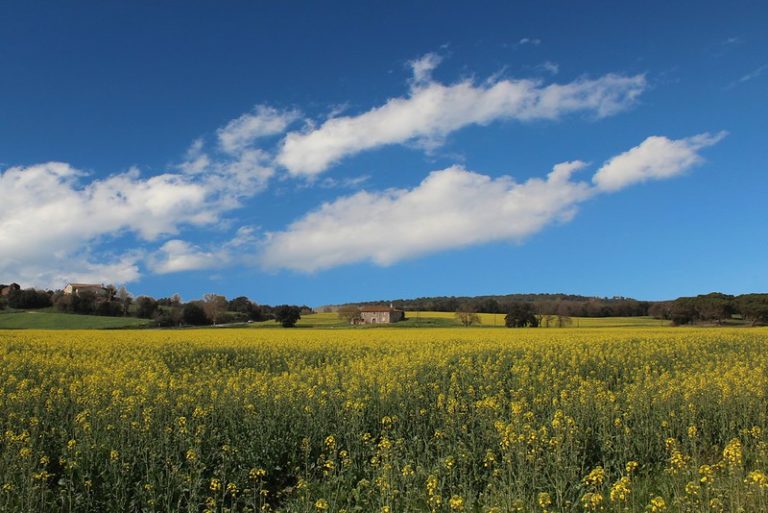
The question of yields in agriculture is always delicate to address. Indeed, there are two similar concepts that must be carefully separated: yield and profitability. Let’s imagine a GMO plant which would have a 10% higher yield than its non-GMO counterpart but whose seed cost would be 20% higher, what about the profitability which integrates all the related costs and benefits to production (see box on the failure of Bt cotton in India)? Furthermore, the calculation of yields is often evaluated at the station, and not in the cultivated fields. However, the transition from the experimental station to the field often results in a significant loss of the value estimated under ideal conditions. Nevertheless, the question of pure yield remains interesting to look at. And it comes up regularly in debates on GMOs or NGTs.
Clearfield rapeseed promoted for better yields
Clearfield is a BASF brand that the company may sell to other seed companies. This brand can concern several techniques for obtaining a variety (sunflower, rapeseed, wheat, rice, mainly) tolerant to herbicides (imazamox). In the case of Clearfield rapeseed, a report published by ANSES specifies that the technique used by BASF to produce its Clearfield rapeseed is in vitro mutagenesis. The Court of Justice of the European Union (CJEU), in 2018, took care to specify that the techniques of genetic modification mainly developed after 2001 are giving rise to regulated GMOs. A second complementary ruling by the CJEU in 2023 is still being interpreted, notably by the french Conseil d’état which decision is still expected. Clearfield oilseed rape are therefore GMOs but the question of whether they should be regulated as such has yet to be answered by the Conseil d’Etat.
When the first Clearfield rapeseed arrived, BASF spoke on several occasions in agricultural newspapers to praise its technology. We could thus read BASF explaining in Terre-net.net that “Clearfield makes it possible to improve the competitiveness of rapeseed cultivation by reducing the number of herbicide interventions by 35%, an average saving of 20% in weeding costs and exploiting the maximum potential of the variety which results in a yield increase of 10% according to our trials“1. Or again: “farmers who have already tested Clearfield varieties have reduced on average their herbicide Ift [treatment frequency indicator] by 33% and the number of products used by 51%, […] The number of passes is reduced to 1.3 on average, compared to 1.9 in conventional weeding. Finally, still compared to a classic solution, it provides a yield gain of 3.2 to 4.2 q/ha, up to 5.9 q/ha compared to a control“2. Sophie Babinet, BASF’s regional marketing strategy manager, indicated a +10% yield for Clearfield rapeseed “compared to a solution taken under similar conditions“. This increase in yield absorbs, she underlines, the additional cost of the seeds, which, “depending on the varieties, oscillates between 10 and 20 euros/ha”, specifies Jérôme Brun, in charge of relations with seed companies for BASF Agro.
The cost of the herbicide treatment would be comparable to the cost of treatment with traditional solutions in the case of difficult flora3. Amélie Lavoisier, journalist for Circuits Cultures, therefore legitimately wonders why with such results this technology, “on the market since 2012 and without direct competition, does not achieve a greater market share with regard to the potential 500,000 ha”. BASF’s response is twofold: on the one hand, “this technology fundamentally changes farmers’ practices, by introducing more agronomy and reasoning“, but also because “the climate of opposition linked to the mutagenesis technique, although widely used in agriculture, including organic, does not promote the growth that this solution should have”4.
We will not discuss the second “reason” for this flagging growth except to point out that in the specific case of BASF’s Clearfield oilseed rape, contrary to what the company implies, it is not used in organic farming, since it has been genetically modified to resist chemical herbicides.. As for the first part of the answer, it has a slight contemptuous side for the farmers… But above all, BASF does not detail that the farmers also quickly understood that the Clearfield rapeseed could be problematic due to the regrowth of Clearfield rapeseed from a year after year and weeds (ravenella, wild mustard, etc.) become resistant to this herbicide. A fear raised on the farmers’ Internet forum from the first plantings of Clearfield rapeseed5. And Arvalis titled one of his articles: “consume ALS inhibitors [Editor’s note: of which imazamox is one] in moderation”6 due to the rapid appearance of resistance in several weeds.
Yields questioned
These improvements in the yield of these Clearfield rapeseeds, promised by BASF, have been undermined by several reports published by Irta7, the Catalan public institute for research in agri-food and technology. In 2023, Irta published the results of its evaluations of eight rapeseed varieties, three of which were Clearfield varieties (Vestal CL, Inv1266 CL, DK Imove CL)8. This evaluation was carried out over three years (2021, 2022 and 20239) in the district of Girona, in Spanish Catalonia. The conclusion is clear: “the results indicate that their production [that of CL varieties] is similar to or slightly lower than that of the main conventional hybrids“. The differences overall remain quite small. In the end, no variety, neither hybrid nor Clearfield, exceeded the yields of the ES IMPERIO control (see table below).
| Variety | Breeder | Production index (in %) (3 trials: 2021, 2022, 2023) | Production index (in %) (2 trials: 2022, 2023) |
|---|---|---|---|
| ES Imperio (témoin) | Lidea Seeds | 100 | 100 |
| Hillico | Florimond Desprez | 88,8 | 88,2 |
| Melodie | ID Grain | 89,1 | 84 |
| Architech | LG Seeds | 86,4 | 84,7 |
| RGT Jakuzzi | RAGT | 85,8 | 82,2 |
| Vesta CL | Mas Seeds | 91,8 | 90,4 |
| Inv1266 CL | BASF | 90,9 | 89,9 |
| DK Imove CL | Bayer / Delkab | 81,6 |
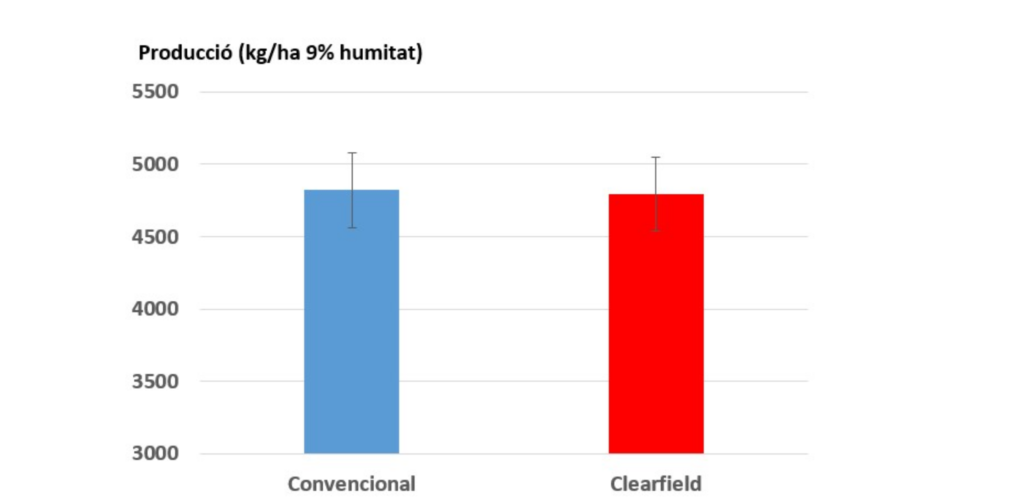
A previous evaluation on four campaigns (2018 – 2021), published in 2021 and also carried out by Irta, gave the same results. This institute had already evaluated 39 varieties of rapeseed, including several CL10 (Carlton CL, Clavier CL, Dax CL, DecibelL CL, DK Implement CL, DK Importer CL, Inv1266 CL, Nizza CL, PT279CL and Vestal CL). No CL variety tops the rankings in terms of yield. In this evaluation, the control variety was already ES Imperio, as it is currently widely cultivated in the Girona region (Catalonia). And the researchers also point out that “if we consider the three-year series, the conventional varieties (ES IMPERIO, HILLICO, DIFFUSION, SY FLORIDA, ES CESARIO, DK EXPRESSION, MELODIE, RGT JAKUZZI and ES AMADEO) on average outperformed the ‘ Clearfield’ (DK IMPLEMENT CL, CARLTON CL and DECIBEL CL) by approximately 13% (643 kg/ha)”.
Questioned by Inf’OGM, one of the person responsible for these reports, Joan Serra, told us that these tests were carried out “in a scenario where weeds were controlled”. In the tests, weeds were eliminated in the different plots with the same herbicide, metazachlor, as this researcher explains to us. Asked about the significant presence or not of cruciferous plants that are difficult to control in the plots, he replies: “We have not tested weed control strategies, but compared different varieties. These are variety evaluation trials and not comparisons of herbicide strategies”. Likewise, when asked whether, in the event of a heavy infestation of weeds from the cruciferous family, CL varieties will have a better yield than other conventional varieties, he specifies: “it is probable, provided that satisfactory control of these weeds is achieved – this is not always the case”.
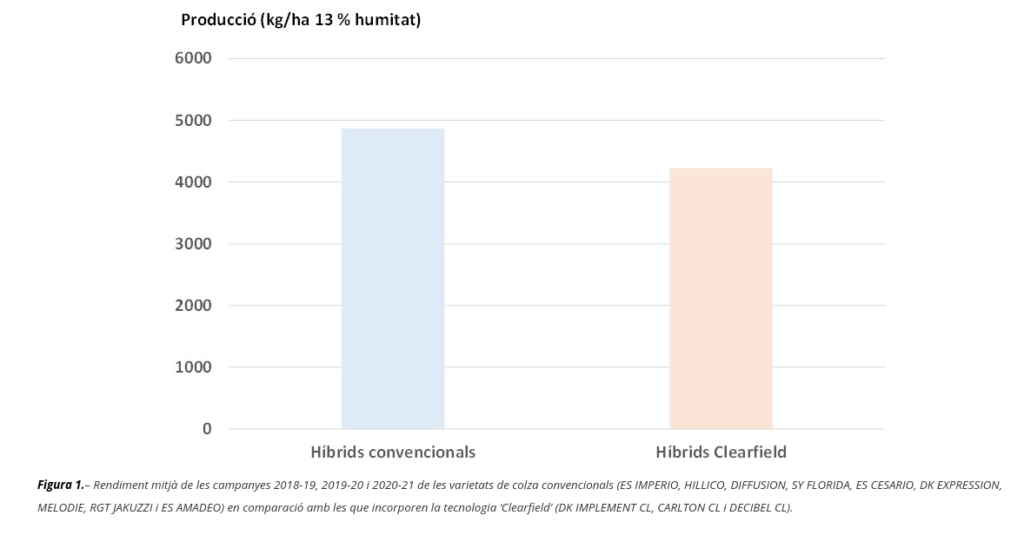
Clearfield varieties, like other varieties made tolerant to herbicides, regardless of the technique (genetic modification or conventional selection), have been developed to facilitate the work of farmers (easier management of herbicides initially) and to “be cultivated in plots with the problem of the presence of grasses resistant to the main herbicides authorized in cultivation, but sensitive to Imazamox, as many species of the cruciferous family can be”. It’s a technical solution that allows the farmer to get his head above water a little, but quickly it doesn’t works, or less well… and the seed companies will propose a new technical solution… and so on. HT crops are a simple technical headlong rush that create as many problems as they solve. There are also other ways of considering the “fight” against weeds of the cruciferous family: much longer rotations, systematic false seeding, mechanical weeding (hoe, harrow, weeder)11.
Failure of Bt cotton in India
A recent scientific article, published in Environmental Sciences Europe in 2023, shows the failure of Bt cotton in India. India ranks at the bottom of the ranking in terms of cotton yield in kg/ha. Australia has a national annual average of 2011 kg/ha, China 1844 kg/ha… and India is only 466 kg/ha. The authors first note that transgenic Bt cotton has generated significant problems of resistance to the insecticidal toxins produced by this plant, developed by the main cotton pest, namely the pink bollworm (Pectinophora gossypiella). The immediate consequence of this resistance is a necessary increase in the quantities of chemical insecticides used. These insecticides cause, according to researchers, ecological disruptions and epidemics of very destructive secondary pests.
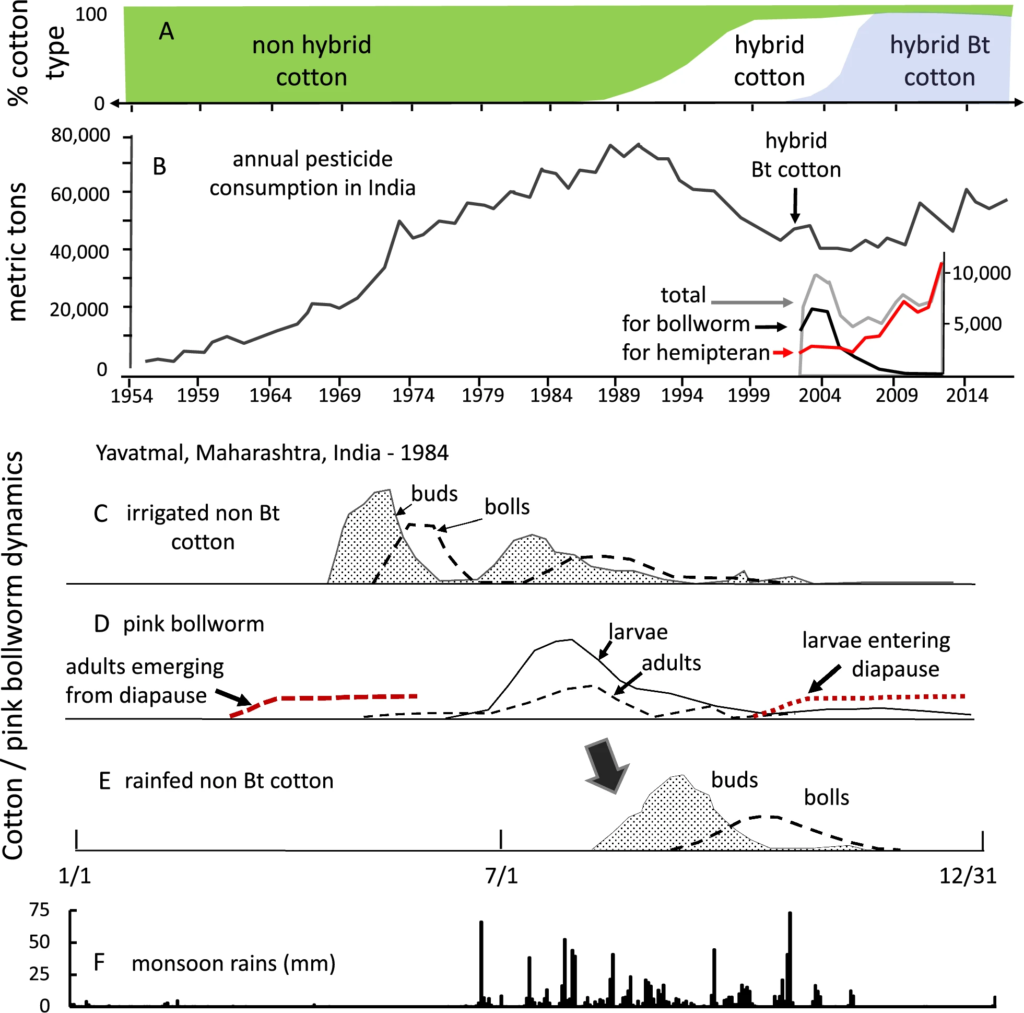
A Changes in the types of cotton grown during 1954–2017
B national pesticide use (97% active ingredient) during 1955 to 2017 [8, 9] with the inset in B showing the relative changes in total insecticide applied for bollworm and hemipteran control during 2002 to 2013 [10]
C the simulated relative dynamics of irrigated non-Bt cottons
D relative dynamics of pink bollworm
E relative dynamics of rainfed non-Bt cotton with the large bold arrow indicating infestation inoculum from irrigated cotton
F daily precipitation (mm) in 1984. Panels C, D, and E are modified from physiologically based demographic models as driven by daily weather dynamics for the 1984 season (see [3, 4]).
Second problem identified by the researchers, the technical difficulty in reusing seeds from one year to the next12. They write: “While hybrid cotton produces fertile seed, the resulting plant phenotypes are highly variable preventing farmers from replanting saved seed, forcing them to buy seed yearly”. Finally, to these technical problems, we must add the high cost of hybrid seeds. This cost leads to lower density crops, which limits the yield potential. For the authors, this “system” is therefore qualified as “sub-optimal”. The authors point out that there are non-hybrid, non-Bt varieties in India for high density sowing (HD13) and over a shorter season (SS for short season). These varieties, as well as indigenous varieties, are developed by the Central Institute for Cotton Research (CICR), but they have never been promoted or defended. They write that these varieties “can potentially produce more than double the yield compared to the current low-density hybrid Bt rainfed cotton system. Although the 7.5-fold higher seeding rate for non-hybrid HD-SS cotton would increase seed costs to ~ $56 ha−1 (i.e., $7.5 × 7.5), this would be offset by higher yields, avoidance of spring pink bollworm infestations, reduced buildup of late-season pests (i.e., pink bollworm, American’ bollworm (Helicoverpa armigera), and others), lower pest control costs and pest damage, synchronized maturity for harvesting, seed saving for replanting, increased profit, and the facilitation of organic production”. They also add that “of course, high-yielding hybrid HD-SS Bt varieties have also been developed, but at current hybrid seed prices, the 7.5-fold seeding rates would cost ~ $236 ha−1 (i.e., $31.50 × 7.5) without commensurate increases in yield, and the hybrid technology would prevent seed saving for replanting. Due to its pest avoidance properties, the wide-scale planting of non-hybrid HD-SS rainfed cotton would render the Bt technology largely irrelevant as demonstrated in irrigated desert cotton in California where HD-SS pure-line non-hybrid varieties combined with early harvesting and plowing disrupted overwintering in PBW, saving the cotton industry from the ravages of this invasive pest”.
The authors therefore conclude that “agricultural economists failed to recognize the inherent obsolescence of the Bt construct under Indian conditions as resistance to Bt toxins quickly evolved in PBW increasing costs, economic distress and systematic dispossession of resource-poor households, and appropriation of their meager resources by other economic actors. […] Indian cotton farmers have been paying a premium for a hybrid technology that is a value-capture mechanism protecting seed industry IPRs and profits—the economic plight of poor farmers appears to have been viewed as collateral damage“.
- HB, « Les agriculteurs satisfaits par les variétés Clearfield », Terre-net, 30 juillet 2015. ↩︎
- Mathilde Carpentier, « Les colzas Clearfield commencent à se déployer aux prochains semis », Terre-net, 18 juillet 2013. ↩︎
- Amélie Lavoisier, « BASF Agro veut doubler les surfaces de Clearfield », Circuits culture, 17 avril 2015. ↩︎
- Ibid. ↩︎
- Forum « Colza Clearfield » sur Tema Agriculture et Terroir. ↩︎
- Arvalis, « ARVALIS-CETIOM infos – CEREALES / Gestion des herbicides : consommez les inhibiteurs d’ALS avec modération », 9 novembre 2011. ↩︎
- L’Institut de Recerca i Tecnologia Agroalimentàries. ↩︎
- Joan Serra et al., « Resultats de les colzes clearfield a l’interior de Girona », Extensius.cat, 30 août 2023. ↩︎
- The DK Imove CL variety was only tested in two years. ↩︎
- Joan Serra et al., « Varietats de colza. resultats comarques gironines », Extensius.cat, 28 juillet 2021. ↩︎
- Fanny VUILLEMIN et Franck DUROUEIX, « Lutter contre les crucifères en colza », Terres Inovia, 2 juillet 2020. ↩︎






